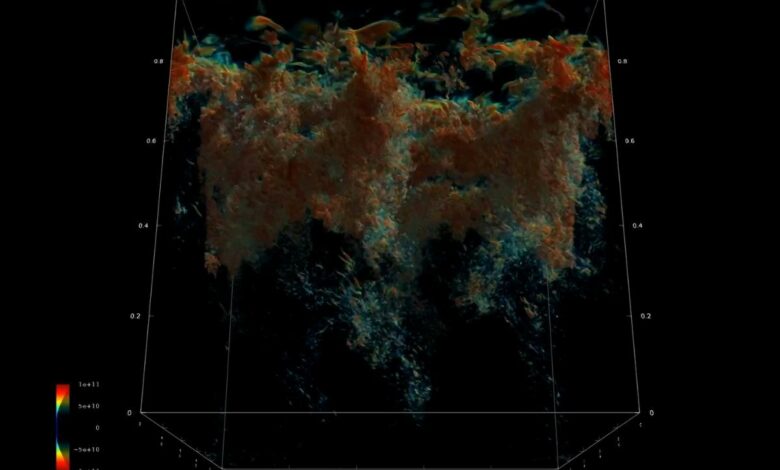NASA uses supercomputers to explain complex behavior of the sun

A breakthrough in solar research has been made using NASA’s supercomputer technology, revealing new insights into the complex inner workings of the sun. The simulations, developed by NASA’s Ames Research Center, show turbulent motion in the Sun’s upper layers, using data collected by several spacecraft observing the Sun. These findings are intended to increase understanding of solar activity and its effects on space weather.
Advanced techniques reveal fine solar structures
The animated simulations show the vigorous spinning and churning of solar plasma, which resemble chaotic currents similar to boiling water. The model shows how materials move within the layers of the sun, bringing new clarity to solar dynamics. Dr. Irina Kitiashvili, a leading scientist at NASA Ames, explained that these simulations take a “realistic approach,” using advanced knowledge of solar plasma to replicate phenomena observed by NASA’s Solar Dynamics Observatory.
The research focuses on reproducing detailed structures of the Sun’s subsurface layers, capturing features such as shock waves and tornado-like phenomena. These features, which span just a few kilometers, represent details previously unattainable with spacecraft observations alone. However, global models of the sun remain beyond current computing capabilities. Instead, smaller regions are modeled to gain a deeper understanding of the specific dynamics.
The sun’s activity has a significant impact on the Earth, influencing seasons, weather, and weather patterns in space. Accurate space weather forecasts are critical to protecting astronauts and spacecraft, especially during missions like NASA’s Artemis campaign. The NASA Parker Solar Probe, which will make a record-breaking approach to the Sun in December 2024, will further support these efforts.
Exploring new frontiers in solar research
The simulations were run on the Pleaides supercomputer at NASA’s Advanced Supercomputing facility and generated extensive data over several weeks. As the sun approaches its maximum solar period, researchers expect to reveal additional phenomena, improving predictions about the sun’s behavior.




